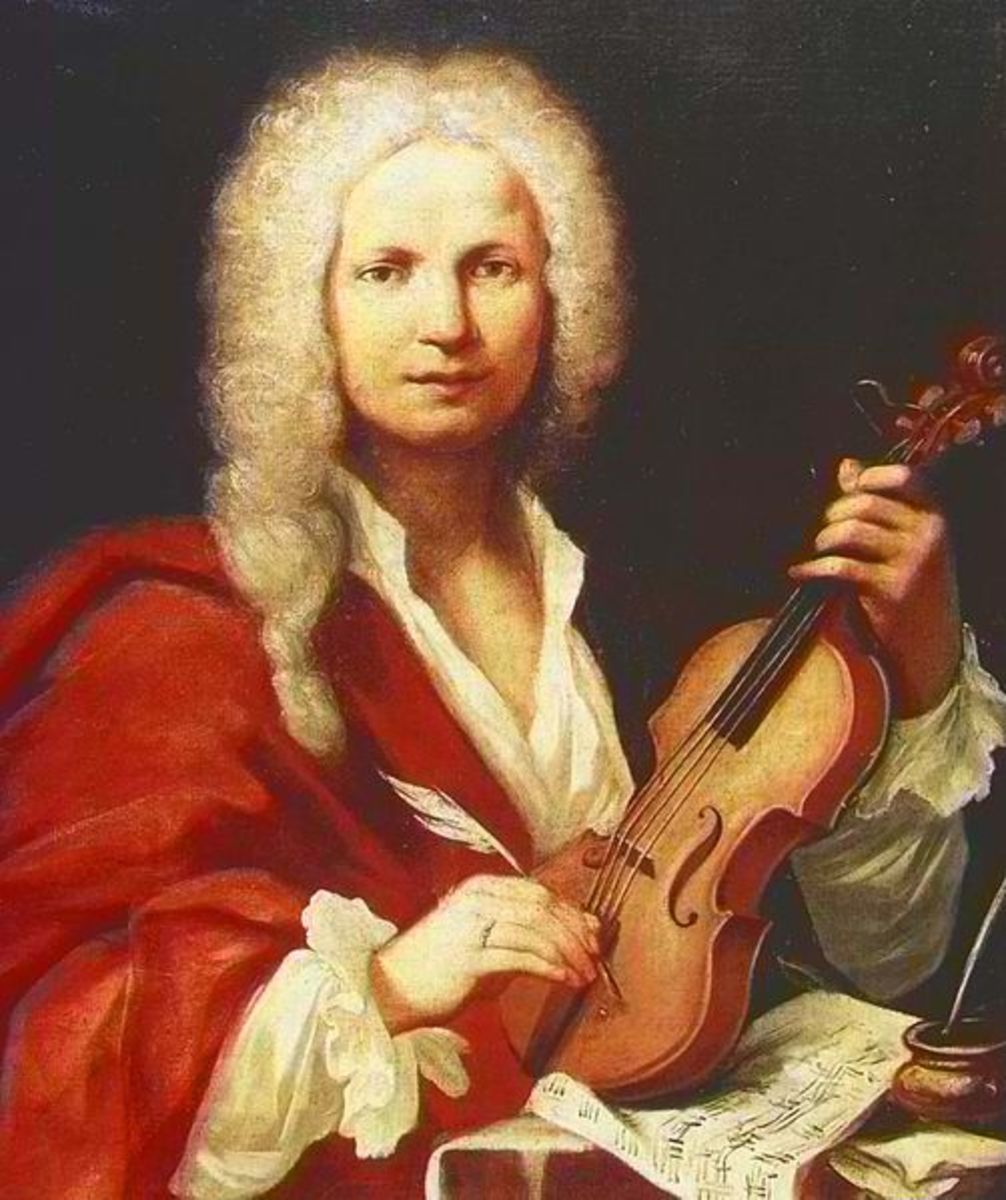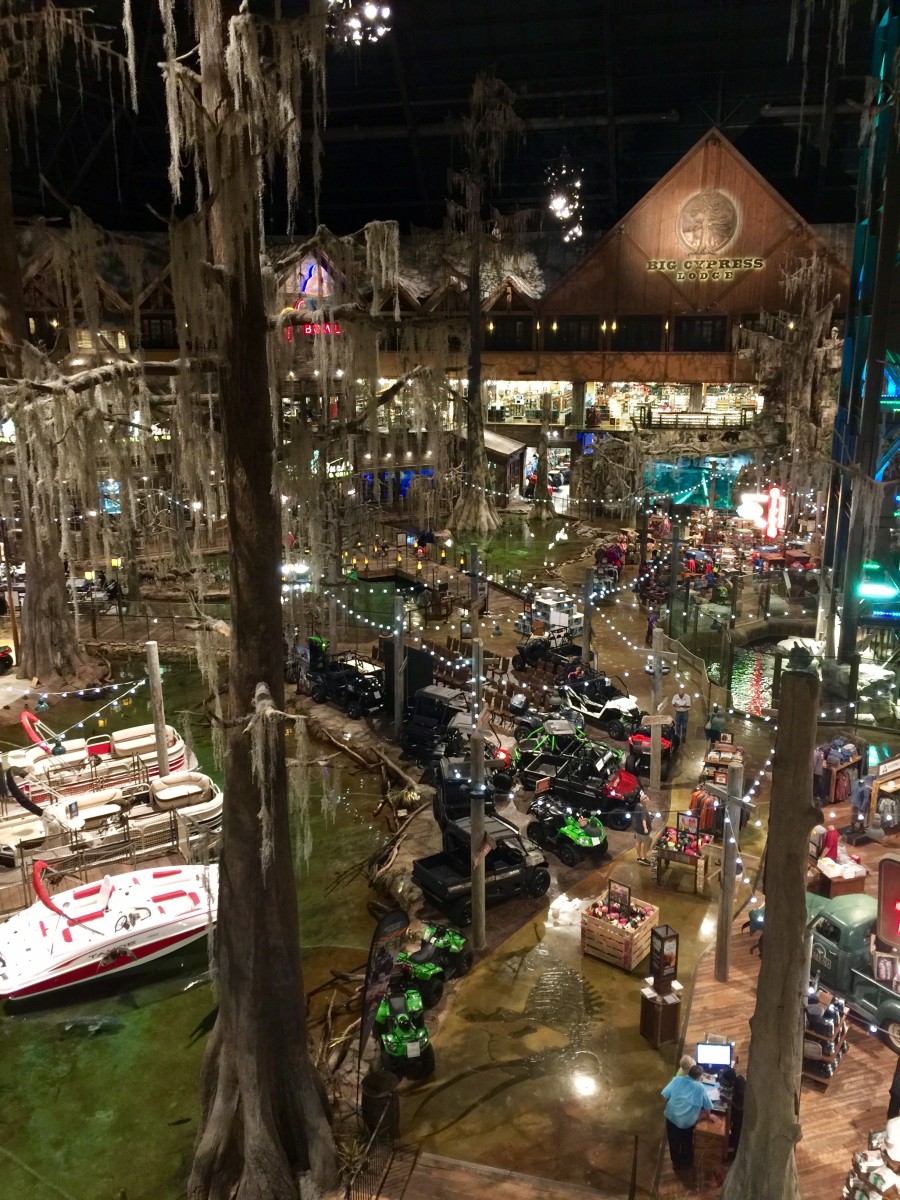Four Seasons Hotels and Resorts

Four Seasons Hotels and Resorts is a great resort located principally in Canada. It is at the international level. “It is a five-star hotel management company. Travel + Leisure magazine and Zagat Survey rank the hotel chain's 98 properties among the top luxury hotels worldwide. Readers of Conde Nast Traveler magazine have voted the company's Golden Triangle property in northern Thailand as their favorite in the world for three consecutive years,” (Four Seasons Hotels and Resorts, 2014). Four Seasons Hotels and Resorts has been also ranked many times by Fortune. As it is stated, “The company has been named one of the ‘100 Best Companies to Work For’ by Fortune every year since the survey's inception in 1998 and is lauded for having one of the lowest turnover rates in the industry” (Four Seasons Hotels and Resorts, 2014). The company has a good business model, which may be differed compared to companies who may operate their properties. In terms of business model, “Four Seasons does not own most of its properties; it operates them on behalf of real estate owners and developers. The contracts between Four Seasons and property owners typically permit the company to participate in the design of the property and run it with nearly total control over every aspect of the operation” (Four Seasons Hotels and Resorts, 2014). The author of the article titled Four Seasons Hotels and Resorts talks about how the company has its gross income and its profit from in terms of percentage. “Four Seasons generally earns 3 percent of the gross income and approximately 5 percent of profits from the properties that it operates, and the property owners are required to additionally contribute money for chain-wide sales, marketing, and reservations systems” (Four Seasons Hotels and Resorts, 2014). The author also talks about how the company manages its costs to satisfy its needs. As it is stated, “Four Seasons hotels have larger staffs than competing chains, therefore they create separate reserve accounts to cover upkeep costs” (Four Seasons Hotels and Resorts, 2014). The author also talks about the type of ownership division that the company has. He states that “Four Seasons has a fractional ownership division, Four Seasons Residence Clubs” (Four Seasons Hotels and Resorts, 2014). The history of the company is very complicated. The company was built in the twenty century. It was built by an architect. As stated in the article titled Four Seasons Hotels and Resorts, “Canadian businessman Isadore Sharp founded Four Seasons in 1960. While a young architect working for his father, Sharp designed a motel for a family friend that succeeded and inspired him to try creating his own hotel in Toronto. As the only large parcel of land that he could buy was in a disreputable area, he designed the hotel as an oasis for business travelers; the Four Seasons Motor Hotel opened in 1961” (2014). The author goes on to indicate that Sharp did not build or design only these properties listed above but many others also, and Sharp gives his opinion about what should be done. The author says, “Sharp built more hotels, but upscale luxury did not become part of the brand until the company expanded to London. When a developer approached Four Seasons about building a hotel in London, Sharp argued that the hotel should compete with the city's old-world, elite hotels, such as Claridge's and The Connaught, which he felt treated customers based on their social class. The hotel opened in 1970” (Four Seasons Hotels and Resorts, 2014). Additionally, the 1974 cost overruns at a Vancouver property at the company, and its consequence also mention in the article. As it is mentioned, “In 1974, cost overruns at a Vancouver property nearly led the company into bankruptcy. As a result, the company began shifting to its current, management-only business model and eliminate costs associated with buying land and buildings and instead begin earning profits once the hotel opens” (Four Seasons Hotels and Resorts, 2014). The author talks about the changes that effectuated in the company in the 1986’s and 1990’s. He says that “the company went public in 1986. In the 1990s, Four Seasons and Ritz-Carlton began direct competition, with Ritz-Carlton emphasizing a uniform look while Four Seasons emphasized local architecture and styles with uniform service; in the end Four Seasons gained market share” (Four Seasons Hotels and Resorts, 2014). When was the first full-service spa introduced in the company? What did happen to the company in the lasts years. “The first full-service spa was introduced in 1986 at Four Seasons Resort and Club Dallas at Las Colinas, and today, nearly all Four Seasons hotels and resorts have spa facilities, and the remainder offer spa services. In recent years, restaurants at Four Seasons hotels and resorts have been recognized by Zagat and Michelin. The latter has awarded at total of 12 stars to six of the company's restaurants, including Hong Kong (two restaurants), Macau, Paris, Florence and Los Angeles” (Four Seasons Hotels and Resorts, 2014). Recent economic downturns cause troubles in the company. As stated in the article,
“Recent economic downturns have affected the company. When the September 11 attacks caused the collapse of the travel industry, Four Seasons refused to cut room prices in order to preserve the perceived value of the brand, which caused tension with property owners who were losing money. The company recovered, and in 2007, it agreed to a buyout by Microsoft Chairman Bill Gates and Prince Al-Waleed bin Talal of Saudi Arabia for $3.8 billion. The pair owns 95 percent of the company, in equal shares; Sharp owns the rest” (Four Seasons Hotels and Resorts, 2014).
The author goes on to indicate that “challenges returned again during the financial crisis of 2007–2010. The company made its first corporate layoffs in its history, cutting 10% of its Toronto workforce” (Four Seasons Hotels and Resorts, 2014). He also talks about what happen in April 2010. “ In April 2010, after a year-long dispute with Broadreach Capital Partners and Maritz, Wolff & Co., owners of the Aviara resort near San Diego, an arbitration panel ruled that while both parties contributed to the demise of the business relationship, ‘Four Seasons didn't violate its management agreement, as Broadreach had alleged, according to a joint statement released by the companies. The panel ordered that Broadreach pay Four Seasons to terminate the contract.’ The resort is no longer a Four Seasons.” The company also operates in China, Hangzhou, Guangzhou, Beijing, and Shanghai. As it is stated, “Four Seasons continues to add more hotels and resorts to its portfolio, notably in China. It opened a new hotel in Hangzhou in 2010 and Guangzhou, Beijing and a second property in Shanghai in 2012” (Four Seasons Hotels and Resorts, 2014). The company also wants to continue to operate in other countries. “It will also open new hotels in India to add to its one hotel in Mumbai. It announced an opening in Moscow in 2014” (Four Seasons Hotels and Resorts, 2014). In 2012, Four Seasons make some progress in Toronto. “In October 2012, Four Seasons opened a new Toronto property in Yorkville. At 259 rooms, this ‘marked the renewal of an iconic Canadian brand in its hometown. It also heralded the entry of celebrity chef Daniel Boulud’” (Four Seasons Hotels and Resorts, 2014). The author goes on to talk about the property of Daniel Boulud and the penthouse. He states, “This property also hosted the sale of its vaunted penthouse to entrepreneur Robert Österlund, the founder of Xacti, LLC and Inbox.com, for a Canadian record price of over $36M. This penthouse was designed by Isadore Sharp's personal designer, William Mockler, of Toronto's Drawing Room Architect, Inc. and was constructed by Menkes Developments Ltd” (Four Seasons Hotels and Resorts, 2014). How is the company philanthropically? “The company and its hotels and resorts have long been involved in philanthropic programs, with a focus on Supporting Sustainability, Building Communities, and Advancing Cancer Research. Notably, Four Seasons was one of the founders of the Terry Fox Run in 1981, which has since grown into the world's largest single day cancer fundraiser, with events around the world every September. To date, the Terry Fox Run has raised close to half a billion dollars” (Four Seasons Hotels and Resorts, 2014). The author goes on to state,
“In 2001, Four Seasons Resort Maldives started collaborating with the local environmental organization Seamarc/Marine savers, which has set up an ambitious program of reimplantation of coral in damaged areas (known onsite as Reefscapers). Many thousands of guest-sponsored ‘coral frames’ have been transplanted with success in Kuda Hurra and Landaa Giraavaru resorts reefs, and are under close survey by marine scientists; they constitute a refuge for thousands of tropical species, and participate in the preservation and recovery of these fragile ecosystems. In 2011, Four Seasons celebrated its 50th Anniversary and announced through their livingvalues.fourseasons.com website that they had decided to launch their 10 Million Trees campaign in which they committed to plant 10 million trees around the world over the next few years” (Four Seasons Hotels and Resorts, 2014).
Four Seasons also had been receiving some outstanding nominations by Canadian Opera Company. As it is stated , “On June 19, 2002, the Canadian Opera Company announced Four Seasons Hotels as the naming donor for the COC's new Opera House, also home to the National Ballet of Canada, the Four Seasons Centre for the Performing Arts, located in Toronto” (Four Seasons Hotels and Resorts, 2014). Four Seasons is very committed in terms of ethical standard. As stated in the article titled Commitment to an Ethical Culture, “Four Seasons is committed to open communication concerning its ethical standards and anti-bribery initiatives and has established procedures that are described in the Code to permit the submission on a confidential and anonymous basis (to the fullest extent possible consistent with applicable law) of good faith complaints relating to violations of the Code using a third-party reporting service” (Four Seasons, 2014). In addition to that, in some circumstances, the company does not like to use an intermediary. It is stated in the article titled Commitment to an Ethical Culture that “Four Seasons will not use third parties or intermediaries to engage on its behalf in unethical practices that would be prohibited under applicable law – including the Bribery Act – if undertaken by Four Seasons. Four Seasons expects that all parties and intermediaries that it engages will conduct themselves accordingly when acting on behalf or for the benefit of Four Seasons“(Four Seasons, 2014). Now, the question is can we analyze the development / operational strategy, marketing strategy, culture, management team, and geographical focus of Four Seasons Hotels and Resorts? Is the firm well positioned for the future? Why or why not?
First, let try to analyze the development and operational strategy of Four Seasons and its management team. As stated in the article titled Environmental Mission Statements: Four Seasons’ Golden Opportunity, “Four Seasons involves employees and guests in the common goal of preserving and protecting the planet. We engage in sustainable practices that conserve natural resources and reduce environmental impact. As importantly, sustainable tourism will enhance and protect the destinations where Four Seasons operates for generations to come” (Matt Courtland – Seacoast Green Real Estate, 2014). Matt Courtman talks about what may happen to the industry in terms of its sustainability development. As he states, “As the hotel industry continues to move toward Corporate Social Responsibility, recent Deloitte hospitality research states that ‘sustainability will become a defining issue for the industry in 2015 and beyond.’” (Matt Courtland – Seacoast Green Real Estate, 2014). Matt Courtland – Seacoast Green Real Estate- also talks about how Four Seasons operates and develops around the world and the company’s properties. As he states, “Four Seasons Hotels and Resorts have built an internationally recognized brand by offering guests exceptional luxury in beautiful locations around the world. They understand that while each property provides patrons with a unique experience, a consistent level of service across all hotels is crucial to the success of the company. From what I have found on-line, all Four Seasons properties do not apply the same level of attention to their environmental programs”( Environmental Mission Statements: Four Seasons’ Golden Opportunity, 2014). Four Seasons believe in the Golden Rule principle, which can help them to operate or to manage certain things, and the level attentions of its properties are different. According to Matt Courtland, “From what I have found on-line, all Four Seasons properties do not apply the same level of attention to their environmental programs. Four Seasons says their ‘guiding principle is the Golden Rule – to treat others as you wish to be treated’, and I believe this allows them to excel at what they do. They now have a ‘Golden Opportunity’ to bring sustainability, and the increased revenue and marketing opportunities it offers, to all areas of their enterprise” ( Environmental Mission Statements: Four Seasons’ Golden Opportunity, 2014).
Additionally, Matt Courtland talks about how Four Seasons is very concerned about environmental development operation. As he states, “Four Seasons has posted their environmental stance on-line under the heading ‘Supporting Sustainability.’ One of three corporate values found on their corporate website states that: Four Seasons involves employees and guests in the common goal of preserving and protecting the planet. We engage in sustainable practices that conserve natural resources and reduce environmental impact. As importantly, sustainable tourism will enhance and protect the destinations where Four Seasons operates for generations to come” (Environmental Mission Statements: Four Seasons’ Golden Opportunity, 2014). In terms of agricultural development, Four Seasons focus a lot on environmental protection of natural resources, and Matt talks about what make an environmental mission good. Matt Courland states:
“Four Seasons closes their statement by making it clear why protecting natural resources is important to them. As I outlined in a previous post, an effective environmental mission statement answers the following three questions: Why is the topic important? What is the end goal? How will success be measured? Without understanding why environmentalism is a significant issue for their business, Four Seasons would not be able to develop an effective strategy for minimizing their impact on the Earth” (Environmental Mission Statements: Four Seasons’ Golden Opportunity, 2014).
Additionally, Matt argues that “by stating their aims, Four Seasons touches on another piece that effective environmental policies must contain: what is the end goal? Four Seasons understands that in order to reach their objectives, they must work with both their guests and employees” (Environmental Mission Statements: Four Seasons’ Golden Opportunity, 2014). Matt opinionated about these two effective environmental policies that have been stated in the preceding statements and about another possible course of action that Four Seasons can take to operate its businesses. As Matt states, “These are two vital groups that can have a large impact on sustainability efforts, and Four Seasons is wise to include them. I believe that it is also important that Four Seasons join with their business partners and the communities in which they operate. Both of these stakeholders have a keen interest in the strength and character of Four Seasons’ business practices” (Environmental Mission Statements: Four Seasons’ Golden Opportunity, 2014). Matt (2014) goes on to state in the article titled Environmental Mission Statements: Four Seasons’ Golden Opportunity that Four Season is excelling in terms of hospitality operation management because they are at the top in terms of that. However, on the other hand, he argues that the company lacks certain things in terms of its Supporting Sustainability statement, which can have a negative impact in the company. As he states:
“What their Supporting Sustainability statement lacks is how Four Seasons will measure their success in relation to their goals. For example, they could develop specific and measurable energy reduction targets to be met by 2015 at all of their properties. The absence of an enterprise-wide environmental program with goals for all properties is setting Four Seasons up for inconsistent programs across their brand. I believe this may lead to an appearance that sustainability is not a true core value for the company” (Environmental Mission Statements: Four Seasons’ Golden Opportunity, 2014).
Matt goes on to talk about the lack of a corporate-wide program and green programs at the company and what they are. “Searching the internet provides several examples of ‘green’ programs that take place at Four Seasons hotels. There are gardens, a few sustainable meeting packages, and even some green lodging awards. These initiatives are very encouraging and show that many Four Seasons properties are taking steps toward protecting the natural world; however, the lack of a corporate-wide program means inconsistent and potentially uninspired local offerings are inevitable” ( Courland in Environmental Mission Statements: Four Seasons’ Golden Opportunity, 2014). Matt gives some possible positive possibilities that the company may face. He also talks about how those possible possibilities can help the company to connect with the world. He states, “The time is ripe for them to bring the exceptional execution they apply to other parts of their business into focus on a company-wide sustainability campaign. Not only will this decrease their operational costs and get them in-line with the rest of the industry, going ‘green’ can provide a year’s worth of content for social media marketing and will no doubt drive new business, something even this prestigious company can use in today’s economic climate” ( Courland in Environmental Mission Statements: Four Seasons’ Golden Opportunity, 2014).
Matt gives an example of a Green Initiatives Four Seasons Hotel’s website. “For example, I found one Four Seasons Hotel’s website in which ‘Green Initiatives’ is the seventh item listed under the Conference Planning page. The sustainability offering falls below technical assistance, music and entertainment, receiving and maintenance, welcome amenities and VIP gifts, spouse programs, and family programs,” said Matt. Matt talks about what makes Four Seasons differed compared to other companies. As he states, “I understand that what sets Four Seasons apart in the hospitality industry is their close attention to all aspects of a meeting and this thorough list of offerings is proof that they can accommodate all conference needs” ( Courland in Environmental Mission Statements: Four Seasons’ Golden Opportunity, 2014). Matt talks about how he feels about the “Green Initiative” system. According to Matt, “At the same time, I am discouraged to find ‘green’ initiatives last in the list of services offered to Four Seasons’ guests. Its position within the list matters. I was forced to scroll down two pages to find the first mention of ‘green’” (Courland in Environmental Mission Statements: Four Seasons’ Golden Opportunity, 2014). Matt Courtland goes on to mention:
“Having studied and worked with sustainability programs for many years, I believe this makes the ‘Green Initiatives’ offering at this Four Seasons Hotel appear to be an afterthought. Added to the bottom of the list, the sustainability option may seem to be offered because it is in vogue rather than being a corporate value of the company. Four Seasons truly has a “Golden Opportunity” to bring sustainability into every part of its operations and avoid the potential mixed-message that situations like this create” (Courland in Environmental Mission Statements: Four Seasons’ Golden Opportunity, 2014).
Matt Courtland of the article titled Courland in Environmental Mission Statements: Four Seasons’ Golden Opportunity illustrates some possible courses of actions that the company can take to better the environmental condition of the company for a better operation or development. He states, “An effective plan would be to hire a Chief Sustainability Officer who can create a robust environmental mission statement and develop an environmental action plan for the entire organization. As is quickly becoming the norm, Four Seasons should be transparent about their entire sustainability project and publish an annual report documenting all of their environmental work” (Courland in Environmental Mission Statements: Four Seasons’ Golden Opportunity, 2014). According to Matt Courtland,
“Making sure employees embody The Golden Rule every day allows Four Seasons to offer consistent and outstanding service at all of their properties. To ensure the success of a new sustainability program, Four Seasons will need to train their staff to incorporate “green” ideals into everything they do. Knowing how well they execute day-to-day operations as well as special projects, I am sure that Four Seasons will develop and implement an innovative and exciting environmental sustainability program when they turn their attention to this ‘Golden Opportunity’” (Courland in Environmental Mission Statements: Four Seasons’ Golden Opportunity, 2014).
How does Meet Isadora Sharp operate one of the Four Seasons Hotels? In the article titled Creating the Four Seasons Difference, Roger L. Martin talks about how Meet Isadora Sharp operates Four Seasons. According to Roger L. Martin, “After opening that fourth hotel, Four Seasons Sheraton, in 1972, Sharp sought, in his words, ‘to combine the best of the small hotel with the best of the large hotel.’ He envisioned a medium-sized hotel—big enough to afford an extensive array of amenities, but small enough to maintain a sense of intimacy and personalized service” (Creating the Four Seasons Difference, 2008). Roger (2008) also talks about how Sharp seemed to have a belief in providing better service at the time that he was operating the company and about how did Sharp believe that it can be beneficial for the company. “Sharp reasoned that if the Four Seasons offered distinctly better service than its competitors, it could charge a substantial premium, boosting revenue per room to the point where it could offer top-of-the-line amenities. Before he could ask guests to pay a super-premium room rate, though, Sharp understood that he would have to offer them an entirely different kind of service” (Creating the Four Seasons Difference, 2008). According to Roger L. Martin,
“When he considered what his guests, mostly travelling business executives, were looking for, Sharp's view of salience was more nuanced and humane than that of his rivals. ‘Luxury, at that time, was seen chiefly as architecture and décor,’ says Sharp. ‘We decided to redefine luxury as service—a support system to fill in for the one left at home and the office.’ Four Seasons became the first to offer shampoo in the shower, 24-hour room service, bathrobes, cleaning and pressing, a two-line phone in every guest room, a big, well-lighted desk, and 24-hour secretarial services. Defying the traditional approach in the industry, which was to set a relatively fixed standard of physical and service quality across the entire chain, Sharp made sure each city's Four Seasons reflected the local color and culture.” (Creating the Four Seasons Difference, 2008).
Sharp also focused on the salience of the hotel's ownership structure, and that helped him to compete with many other competitors in terms of operating. As Roger L. Martin indicates, “Sharp also recognized the salience of the hotel's ownership structure. To his rivals, operating and owning went hand in hand. But ownership tied up capital and exposed the hotelier to fluctuating local real estate values, and diverted valuable senior management time. Four Seasons shed those burdens by becoming the first big hotel company to manage, rather than own, the hotel facilities that bore its name” (Creating the Four Seasons Difference, 2008). Roger also talks about how sharp’s operation was trusted in the company. As Roger states, “Sharp's management has generated enough trust to establish Four Seasons as the employer of choice in the hotel industry” (Creating the Four Seasons Difference, 2008). Roger also talks about architecture at four seasons at the time that Sharp was operated the company. He states that “in architecting Four Seasons' competitive strategy, Sharp did not proceed sequentially. Instead of first deciding how big a hotel would be, then establishing service standards, and then setting human resources policy, he kept the chain of considerations in mind while working on individual links in the chain” (Creating the Four Seasons Difference, 2008). According to Roger,
“Sharp set out to create ‘a reputation for service so clear in people's mind that Four Seasons' name will become an asset of far greater value than bricks and mortar.’ The results speak for themselves. With 73 hotels in 31 countries, and with 25 properties under development, Four Seasons is considerably larger than the next biggest luxury player. Condé Nast Traveler ranks 18 Four Seasons hotels in its global Top 100 list, more than three times the next most cited chain. A Four Seasons signifies that a city has become a global destination” (Creating the Four Seasons Difference, 2008).
Why Sharp succeed with its plan? According to the article titled Creating the Four Seasons Difference, “Sharp succeeded because he was willing to consider a broader set of salient features, delve into more complicated causal relationships, and architect holistically the decision facing him. His resolution produced a system of reinforcing activities, each of which fits with and strengthens the whole. In the process, he did nothing less than fashion a new way to succeed in the luxury lodging business” (Martin, 2008).
According to the article titled Commitment to an Ethical Culture, “Four Seasons has earned an enviable reputation internationally that is built, in part, on our commitment to doing business in a manner that complies with applicable laws and is, and is perceived to be, consistent with the highest ethical standards. This means, among other things, avoiding bribery and corruption, and implementing appropriate policies and procedures throughout Four Seasons’ business operations that will guide those who provide services to and for Four Seasons – including employees, contractors and agents – consistent with Four Seasons’ ethical standards”(Four Seasons, 2014).
How is the marketing strategy of Four Season Hotel? As stated in the article titled Why Four Seasons Leans on Social by Giselle Abramovich, “2009 was a dire time for the luxury hospitality industry. Four Seasons Hotels and Resorts, rooted in traditional ad models, realized it needed to rethink its marketing strategy if it was going to survive. It was approaching the consumer travel purchase journey from a linear perspective — and it wasn’t exactly a great time to be selling $400 hotel rooms” (2012). Elizabeth Pizzinato also talks in that matter. According to Giselle Abramovich , ‘“Basically, we were suffering the AIG effect,’ said Elizabeth Pizzinato, svp of marketing and communications at the hotel chain. ‘Luxury wasn’t cool anymore. People stopped staying with us because their perception had changed. That’s when we made a conscious decision to move our traditional advertising dollars into digital”’ (Why Four Seasons Leans on Social, 2010). During that time, it conceivably seems to be that customers play a prioritized role in the company. As it is stated, “A Four Seasons study in 2009 confirmed this. It found that for the Four Seasons’ affluent customers, social had become the norm” (Abramovich, 2010). Abramovich (2010) mentions Pizzinato in the matter. According to Abramovich (2010), “’When rethinking our brand promise, it came down to becoming more customized and personal, being locally relevant and authentic, and bringing people lasting memories,’ Pizzinato said. ‘That means managing content in one place, meeting people where they are, encouraging more user-generated content, linking engaging experiences and having a point of view. These are the key tenets of our content marketing strategy’” (Why Four Seasons Leans on Social). Pizanno goes on to indicate in the article titled Why Four Seasons Leans on Social by Abramovich that “right now, we are focusing on what to do with all the data. Using data to inform marketing is the next big opportunity for us” (2010). How many Four Seasons hotel faced challenges during the 2010 event? In how many countries are these hotels? What made the situation exacerbated? What that meant to the company? “Four Seasons, with 86 hotels in 35 countries, faced a challenge many global brands face in social: how to act local. It was exacerbated by the fact that Four Seasons doesn’t own most of its hotels and is instead a franchisor. That meant that each hotel had its own social accounts while leaning on the corporate parent for offers and support, like training for it’s for the social media managers at the hotels” (Abramovich, 2010).
How did the company keep its site? “Four Seasons kept its site at the center of its strategy. Each hotel’s site is a page on the main Four Seasons site, which also carries its digital magazine and the company blogs on family and food. It has also opened up to social in the form of reviews on the site, aggregating them from third-party site TripAdvisor” (Abramovich, 2010).
Additionally, according to the article titled Four Seasons Embraces Digital Marketing, Virtual Experiences, Hotel Chain Accepts Unknown by Incorporating User-Generated Content Into New Site by Frederic Colas and Laurel Wentz, "’We create personal experiences,’ said Susan Helstab, a 25-year veteran of Four Seasons. Named executive VP-marketing three years ago, she oversees global sales and marketing from the company's Toronto headquarters.” Ms. Helstab also talks in the matter. As she states in the article, "We've taken a leading position in creating different kinds of engagement opportunities" (Wentz & Colas, 2012 in Four Seasons Embraces Digital Marketing, Virtual Experiences, Hotel Chain Accepts Unknown by Incorporating User-Generated Content Into New Site by Frederic Colas and Laurel Wentz). Wentz & Colas (2012) goes on to indicate in the article titled Four Seasons Embraces Digital Marketing, Virtual Experiences, Hotel Chain Accepts Unknown by Incorporating User-Generated Content into New Site that “with half of Four Seasons' marketing budget devoted to digital channels, its launch of a revamped website this month is a milestone. It will incorporate user-generated reviews -- still somewhat unusual for luxury brands. Marketers in the category have historically guarded their brands and trademarks closely” (2). Wentz & Colas (2012) also talks about Four Seasons' digital push and how did it seem to be useless for the company, and they mention Ms. Helstab in the matter. As they state, “It's worth nothing that Four Seasons' digital push is being led by a marketer who says she was initially somewhat ‘suspicious of technology.’ Though Ms. Helstab has become an enthusiastic adopter. She has a BlackBerry Torch and an iPad, which has replaced her Kindle because there's only so much room in her suitcase”( Four Seasons Embraces Digital Marketing, Virtual Experiences, Hotel Chain Accepts Unknown by Incorporating User-Generated Content Into New Site by Frederic Colas and Laurel Wentz, 2012). Ms. Helstab also talks about what they are going to do. As stated in the article titled Four Seasons Embraces Digital Marketing, Virtual Experiences, Hotel Chain Accepts Unknown by Incorporating User-Generated Content Into New Site by Frederic Colas and Laurel Wentz, Ms. Helstab states, “We're going to do something that’s really uncomfortable for people who market luxury products and services: import user-generated content. We are going to put up Trip Advisor and other user-review sites' reviews with a direct link to those sites because we're so confident that what we're selling, what we're marketing, what we're offering to our guest is something that stands up to that level of scrutiny”(2012). Ms. Helstab also talks about how some social media sites affect the companies and if technology is a part of the problem. She states in the article titled Four Seasons Embraces Digital Marketing, Virtual Experiences, and Hotel Chain Accepts Unknown by Incorporating User-Generated Content into New Site by Frederic Colas and Laurel Wentz,
“There are Twitter feeds [and Facebook accounts] at the corporate and brand level, and each hotel has their own. It started in the PR department, and then moved to the digital department and this year moved back to the PR department. It's less about technology and more about content, messaging and integration into a marketing-communications campaign -- and that’s led by our marketing communications and PR folks. We have about 220,000 Facebook fans and more than 185,000 Twitter followers [across the different feeds and accounts” (2012).
Helstab goes on to talk about how the luxury-travel market affects the organization. “The luxury-travel market led the recovery, and it continues to lead the recovery. The Middle East was the last to go into recession and was coming out of it well until the Arab Spring. We're seeing very strong growth on the corporate-travel side for 2012, as well as the meetings and events side. The leisure side stayed stronger through the downturn,” she adds in the article titled Four Seasons Embraces Digital Marketing, Virtual Experiences, and Hotel Chain Accepts Unknown by Incorporating User-Generated Content into New Site by Frederic Colas and Laurel Wentz.
In terms of cultural aspects, Four Seasons is very committed. As stated in the article titled Commitment to an Ethical Culture, “Four Seasons is committed to understanding the risks that may compromise these standards and using all reasonable efforts to ensure that those who provide services to and for Four Seasons – including employees, contractors and agents – are aware of and share our commitment to an ethical and anti-bribery culture” (Four Season, 2014).
In terms of geographical focus, Four Seasons is positively developing. As stated in the article titled Four Seasons Is Expanding Its Geographical Reach, “Four Seasons is focusing on new locations in 2014, to be done largely through reflagging pre-existing hotels. The Four Seasons brand is expanding its geographical footprint in 2014, by reflagging existing hotels in new locations. Aside from the group's emphasis on conversions, Four Seasons will increasingly be including a residential component in upcoming establishments. Two-thirds of projects underway include a residential component” (Hospitality, 2014). Scott Woroch, Executive Vice President Worldwide Development, also talks about how the plan that helps the company to expand is and about the expanding reach in that same article. As stated in the article, "’Our strategy is multifaceted: we are targeting destinations where our guests want to go, as well as those markets where we want to establish a local presence to raise awareness and introduce travelers to Four Seasons’, explains Scott Woroch, Executive Vice President Worldwide Development. According to Woroch, this expanding reach also includes improving the existing offer to improve market position” (Hospitality, 2014).
Some new resorts that are opened in other countries in the year of 2014 are mentioned in the article. As it is showed in the article, “Openings in 2014 include: Moscow, the second location in Russia; Orlando, inside Walt Disney World Resort; Dubai at Jumeirah Beach, the first in UAE; Johannesburg; Seoul, the first location in Korea; Casablanca, the second in Morocco; Kyoto, the second destination in Japan; Bahrain Bay, the first in the country; Tianjin, the first in the city and ninth in China; Tanzania Safari Camp, the second in the country; Bengaluru, the second in India; and Philadelphia, New York, Tribeca, and Surfside in the USA” (Hospitality, 2014).
Four Seasons Hotels and Resorts had made some recent changes and improvements but had also faced certain challenges. It conceivably seems to be that the firm is well positioned for the future because it had made more improvements than facing challenges, and a lot of changes had been made to better the company for the future. Some good plans and good visions have been established and are currently in process to better the company for the future. Its development / operational strategy, culture, management team, and geographical focus are excellent and can lead to success. But, on the other hand, its marketing strategy was a little weak or had some flaws that cause deficits in 2009 as it has been stated above in the preceding sections. But those good plans and those good visions that have been established can help the marketing strategy of the company because many managers of the company try to mimic Sharp’s strategy a little bit in some cases, not at full extent, and Sharp’s plan was successful. As a result, it is conceivably seem to be evident or clear that in the future, all aspects of the resort would excel, so that can make us make a reasonable prediction that the company is at good sharp for the future.
References
See: Four Seasons Embraces Digital Marketing, Virtual Experiences, Hotel Chain Accepts Unknown by Incorporating User-Generated Content Into New Site by Frederic Colas and Laurel Wentz. January 16, 2012. October 12, 2014.
See: Four Seasons Hotels and Resorts, 2014. October 12, 2014.
See: Matt Courtland – Seacoast Green Real Estate (2014). Environmental Mission Statements: Four Seasons’ Golden Opportunity.
See: Martin, 2008. Creating the Four Seasons Difference. Bloomberg BusinessWeek, January 23, 2008. October 12, 2014.
See: (2012), Why Four Seasons Leans on Social by Giselle Abramovich in Digiday. October 12, 2014. May 17, 2012.
See: Commitment to an Ethical Culture in Four Season, 2014. May 17, 2012.
About the Author
Roldens Paulynice was born in December 24, 1990 in Gonaives, Haiti. He has published many short stories and essays, especially about relationship or love, literature review, education, and politics. Think before You Act and What Causes Many College Students to Fail or Drop out are two of his works that he likes the most. Fortunately, in February 2009, he had the chance to come to the United States, attended Glade Central High School, and graduated in May 2010 with a 3.08 GPA. In May 8, 2012, he graduated from Palm Beach State College with an Associate in Arts Degree. In May 2014, he graduated from Florida Atlantic University with a Bachelor of Science in Economics. Right now, he is attending Lynn University, pursuing his MBA in international business and commerce. In the near future, he wants to become a CPA. Being a writer is something that he has a certain zeal to become in his life, but right now, he is trying, hoping to become a famous one one day. He is the author of Teenage Marriages Are Likely to End Unhappily, Think before You Act, What Causes Many College Students to Fail or Dropout, Many People Get Married for Foolish Reasons, An Essay about the Tell-Tale-Heart and The Black Cat, and many other works.








